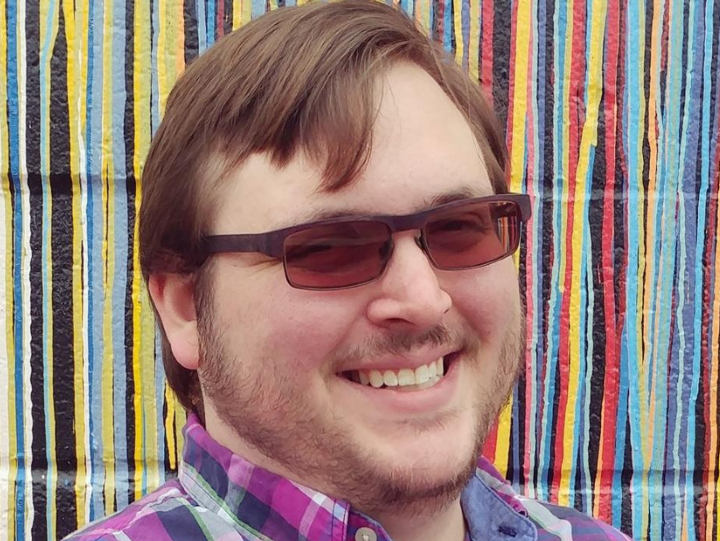
How Can Colleges & Universities Attend to All Students' Worldviews/Beliefs & Practices, Including Paganism? Critical Conversations #35
Equity, Inclusion and Social Justice Equity, Inclusion, and Social Justice Division Spirituality and Religion in Higher Education Faculty Senior Level
November 13, 2023
JCC Connexions, Vol. 9, No. 4, November 2023
In "Magick Circles in Ivy: A Phenomenological Content Analysis of PaganCollege Student Organizations" (Journal of College & Character, vol. 24, no. 34 November 2023), Gordan Maples examines the explicit missions and purposes for Pagan college student clubs, and how those articulations align with in-group or out-group foci in accordance with social identity theory (SIT) and social categorization theory (SCT).
1. You say that Pagan and Paganism are difficult terms to define. How do you define them for your study?
Paganism is an immensely complicated term to define, because it isn’t a consolidated or cohesive belief system; it is an outsider-imposed umbrella catch-all term that has been used in different ways by different people to describe a wide assortment of beliefs and practices that has steadily shifted parameters over generations. To add to the complications of the terminology, the beliefs that are widely considered Pagan are highly personalized individual-to-individual, frequently not collectively organized, and often kept private. Not all people who fit a given definition of Pagan necessarily label themselves that way when surveyed or questioned. There is an encyclopedia of identity labels that people use that fit under the fuzzy umbrella of Paganism, and few agree where that umbrella’s borders really are (Jones, 2012). This has caused immense headaches for demographers, religious scholars, historians, and untold numbers of other academics. For my study, I used a loose corral of Paganism that centers on New Age spiritualities and European-rooted non-traditional belief groups: Neo-Pagans, Wiccans, Witches, Druids, Animists, New Age, Earth-based spiritualists, and followers of Norse, Hellenic, and Celtic traditions. I’ve found that there are some similarly loose boundaries and practice flexibilities across these groups that distinguish them from other occasionally-considered-Pagan traditions that have a bit more cultural cohesiveness, like indigenous American and African diasporic traditions.
2. Why do you think that persons who identify as Pagans are so stigmatized in our culture?
I think the stigma towards Paganism has persisted in our culture for a few reasons. First, it is a small population that isn’t largely organized and doesn’t have much of a visible "footprint"—you won’t see explicitly, Pagan worship spaces in the public sphere, and individual Pagans don’t often advertise their beliefs—so the demographic doesn’t necessarily have a strong public voice to defend itself from misconceptions. Of course, the persistent stigma of the group causes this effect to self-perpetuate. It is worth noting that the social ostracization of Paganism has been cultivated in the culture of the United States essentially since the country’s founding. From the witch trials to the moral panic over purported Satanic ritual abuse in the 1980s, Pagans have historically been an easy target for individuals and organizations trying to further impose Christian social power in the country, and countless villainous portrayals of Pagan groups and individuals in fiction have perpetuated their negative reputation in the public eye. There’s a thick foundation of culturally ingrained preconceptions about the demographicthat isn’t easy to break through.

3. What do you think attracts young people to Paganism?
Paganism is, to put it academically, a path for spiritual self-authorship that fits Baxter-Magolda’s (2001) model like a glove. It provides an avenue to fully define one’s own beliefs from the ground up. There are some common practices across the wide permutations of Paganism—candle-based magick, assorted flavors of herbalism, various methods of divination—but no truly universal ones. For young people from the tweens to the twenties going through the identity development process along so many dimensions, it makes sense that Paganism would have an appeal. There are no mandatory holy texts, endless options for creative spiritual expression, and few (if any) norms to violate. It allows for ample exploration of values and the open challenging of established formulae and prior assumptions. For young people who find themselves either rejecting (or rejected by) other norms they were raised with, I think Paganism makes a lot of sense to spiritually pursue, particularly when their oppression or repression has roots in more traditional religions. I don’t think it is by chance that it is particularly popular among marginalized gender and sexual orientation groups (Lewis & Tollefsen, 2014; Smi th & Horne, 2007). It also offers an overtly spiritual outlet that explicitly secular affiliations (atheism, agnosticism, secular humanism) often don’t, which could be comforting or desirable for many young people exploring the spiritual landscape.
th & Horne, 2007). It also offers an overtly spiritual outlet that explicitly secular affiliations (atheism, agnosticism, secular humanism) often don’t, which could be comforting or desirable for many young people exploring the spiritual landscape.
4. How can colleges and universities find the time, resources, and staff to attend to each and every spiritual worldview a/or belief and practice--such as Paganism?
I understand this is a barrier that many administrators and practitioners see with being religiously inclusive with programming on their campuses: “How could we dedicate resources to every spiritual group when there are so many of them?” The truth is, you don’t need to have a monthly lecture on Paganism or dedicated full-time staff for every religious tradition—that is obviously not financially sustainable or realistic. However, your communications and language can be explicitly inclusive by acknowledging the religious, secular, and spiritual diversity of your campus population. You can have staff and faculty training focused on (or at least inclusive of) religious, secular, and spiritual diversity. You can make sure that your campus has a clear and robust religious accommodation policy that accounts for practicing needs for students from marginalized traditions—dietary needs, athletic alterations, prayer spaces, dormitory rule exemptions for practices like candle magick - and make sure those policies are actively communicated to students, faculty, and staff (Maples, 2023; Maples et al., 2021). You can have an inclusive holiday calendar available for staff and faculty to consult when scheduling exams, activities, and events (Park & Dizon, 2017). It is worth analyzing other institutional policies and practices for manifestations of a Christian-centric perspective on the organizational level either formally or informally (INSPIRES Campus Climate Index, 2023; Small, 2020). And yes, you can—and should—do some student programming around religious, secular, and spiritual diversity (that includes more than just The Big Three: Christianity, Islam, and Judaism). Lastly, it can be immensely valuable to simply acknowledge the existence of religious marginalization on your campus. Students dealing with Islamophobia, antisemitism, and other forms of religious-based prejudices largely know that they are in a marginalized position both in the society and on your campus: but seeing it acknowledged from the institution in some way would be powerful. Being deliberate and mindful around religious inclusion will be valued by students across the range of marginalized religious and spiritual traditions. The biggest obstacles these students often face are the combination of invisibility and neglect: showing that you see and value them through deliberate programming and institutional action is the best way to serve them, regardless of their specific marginalized beliefs, practices, or identities (Blumenfeld, 2006).
References